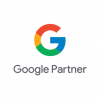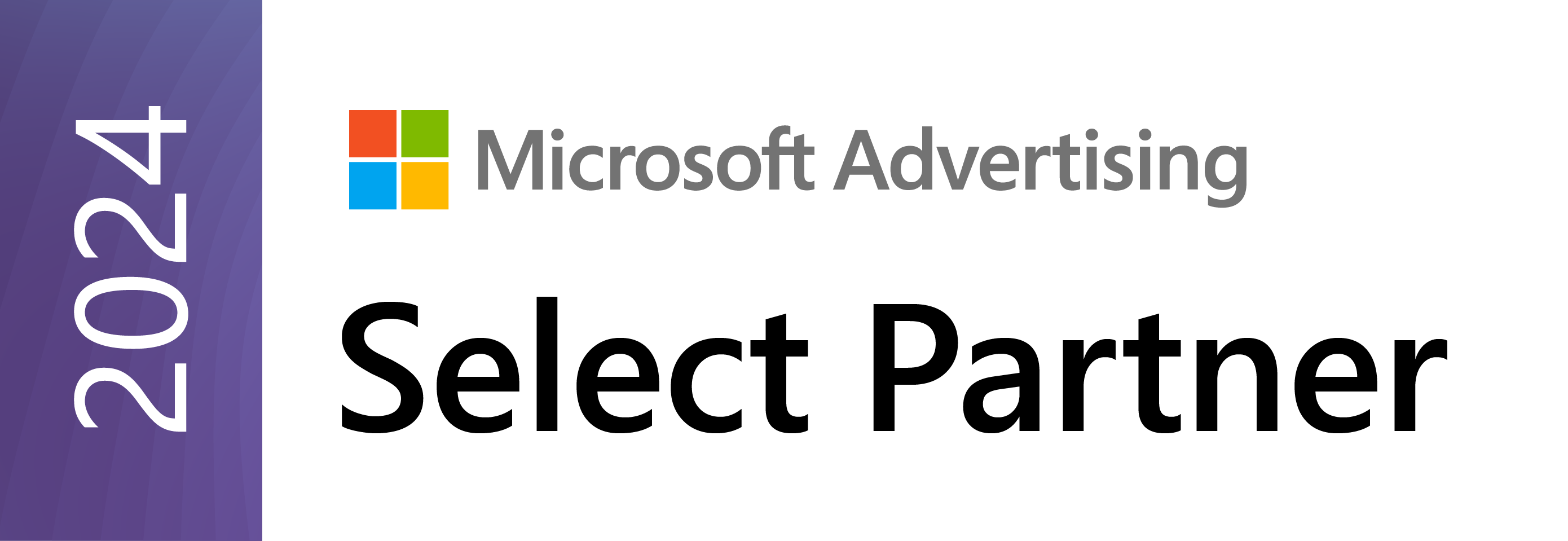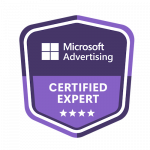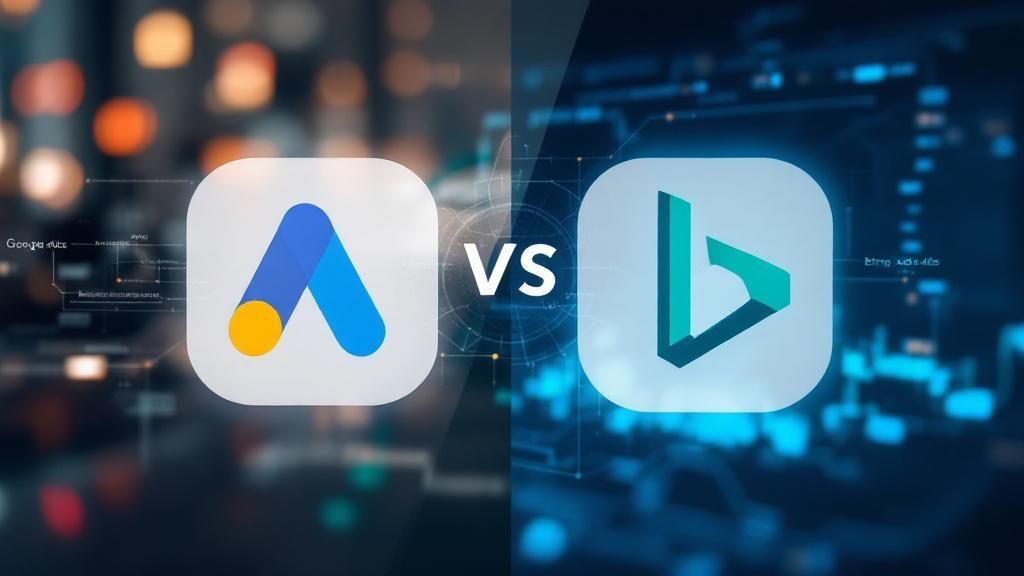
Google Ads vs. Bing Ads: Choosing the Right PPC Platform for Today and Tomorrow
In the realm of digital marketing, selecting the right platform for Pay Per Click Advertising is crucial to achieving your business goals. When considering options, Google Ads and Bing Ads stand out as prominent choices, each offering unique advantages. Google Ads advantages for healthcare include its ability to reach a broad age demographic and maximize patient volume, especially in competitive specialties. This platform’s extensive reach ensures that your ads are seen by a diverse audience, enhancing your ability to attract more patients.
Bing Ads benefits for older audiences include its effectiveness in targeting those aged 45 and above. It is especially effective for reaching affluent demographics, offering lower-cost traffic options. Bing Ads cost efficiency is highlighted by its lower average cost-per-click of $1.45 compared to Google Ads’ $2.85 in 2025.
The benefits of using both platforms include optimizing your advertising strategy by leveraging Google’s extensive reach and Bing’s lower CPCs. This combination allows you to leverage Google’s extensive reach while benefiting from Bing’s lower CPCs, creating a comprehensive and efficient approach to PPC management.

Future of PPC Platforms
The landscape of PPC platforms is on the brink of transformation, with significant innovations expected by 2025. As you explore the future of PPC advertising, including AI and automation in PPC, choosing between Google Ads and Bing Ads becomes crucial. Did you know? A recent study revealed that a substantial percentage of businesses are already shifting their focus towards privacy-first targeting in PPC, driven by Google’s move away from behavioral targeting. This shift necessitates advertisers to adapt by using modeled conversions and AI-generated audiences.
The future of Google Ads is set to be at the forefront of this evolution, with advanced AI systems and privacy protections fundamentally altering the PPC advertising landscape. The integration of AI and automation is transforming PPC strategies, emphasizing real-time decision-making and hyper-personalization. As you consider PPC management, these advancements highlight the importance of selecting a platform that aligns with future trends, ensuring your campaigns remain effective and compliant with emerging privacy standards.
Bing Ads, while often seen as a secondary option, offers unique advantages in this evolving environment. It provides an opportunity for advertisers to reach a different audience segment, often at a lower cost. As AI and machine learning dominate PPC strategies for 2025, Bing Ads may offer a competitive edge with its focus on conversational PPC ads and privacy-first advertising. This makes it a viable option for businesses seeking diverse ppc services.
In this rapidly changing landscape, CS Design Studios suggests that the choice between Google Ads and Bing Ads should be informed by your specific business needs and the emerging trends in pay per click advertising. By understanding the future of PPC platforms, you can make strategic decisions that leverage AI advancements and privacy-first targeting in PPC to optimize your campaigns effectively.

Scientific Insights into PPC
Choosing the right PPC strategy in digital marketing, such as Google Ads or Bing Ads, can significantly impact your digital marketing strategy. What most people do not see about these platforms is the intricate behind-the-scenes algorithms that determine ad placement and cost. Google Ads, with its vast reach and sophisticated targeting options, often provides a broader audience. However, Bing Ads can offer a more cost-effective solution with less competition, making it a viable option for certain niches.
When considering PPC in manufacturing firms, it is crucial to understand the unique advantages each platform offers. Google Ads is renowned for its extensive network and advanced features, which are ideal for businesses aiming for maximum visibility. On the other hand, Bing Ads can be particularly beneficial for professional targeting on LinkedIn, as it often attracts an older, more affluent audience. This distinction can be pivotal in crafting a successful strategy using emotional headlines in PPC.
In the realm of evaluating PPC campaigns, evaluating the performance of your campaigns on these platforms is essential. This involves analyzing metrics such as keyword match types and audience behavior. By doing so, you can optimize your campaigns to ensure they align with your business goals and maximize return on investment.
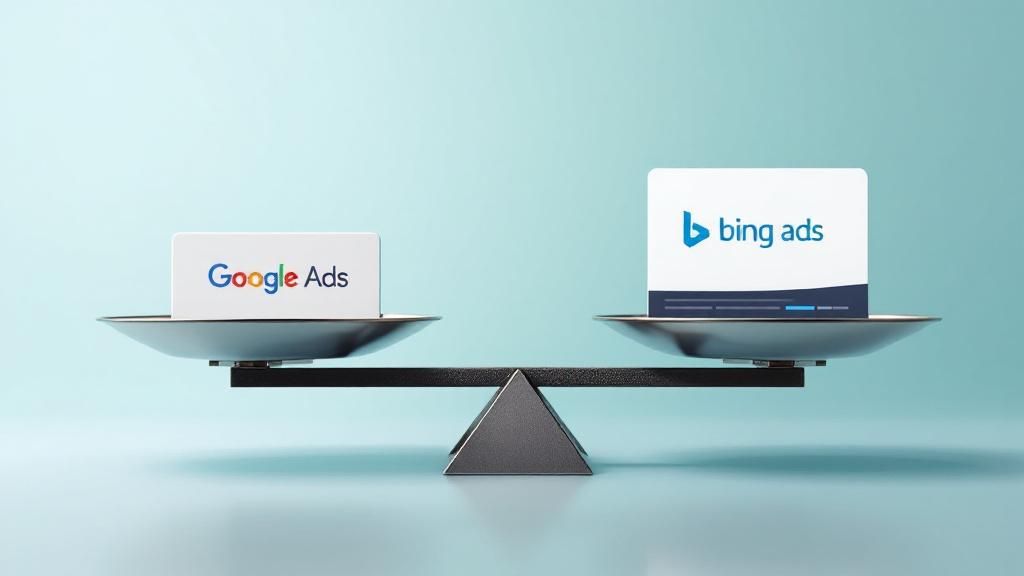
Comparing Google Ads and Bing Ads
When comparing Google Ads and Bing Ads, it is essential to consider the unique opportunities each platform offers. Bing Ads unique opportunities include access to Netflix’s extensive user base, a feature not available through Google Ads. This access can be a significant advantage for businesses aiming to reach a broader audience. Additionally, the differences between Google and Bing, such as ranking factors, user interface, and image search capabilities, can influence your choice of platform.
From a cost perspective, Bing Ads presents a more budget-friendly advertising option. In 2025, Bing Ads boasts a lower average CPC of $1.45, compared to Google Ads’ $2.85. This cost efficiency allows advertisers to stretch their marketing budgets further, making Bing Ads an attractive choice for those seeking to maximize their advertising spend. Moreover, the cost comparison benefits of Bing Ads show a 20-35% lower CPC than Google Ads, providing substantial savings for businesses.
Looking ahead, leading digital marketing agency CS Design Studios anticipates the landscape of pay per click advertising will evolve as both platforms continue to innovate. Bing Ads may further capitalize on its cost advantages and unique partnerships, while Google Ads will likely focus on enhancing its comprehensive suite of PPC services. As these platforms develop, advertisers will need to stay informed to make strategic decisions that align with their marketing goals.

Predictions for PPC Evolution
One of the challenges in choosing the right PPC platform is determining which platform best aligns with your business goals and budget. Google Ads platform and Bing Ads each offer distinct advantages, making the decision complex. Google Ads platform is continuously advancing, introducing new strategies and features like video content and AI-driven video summarization to enhance user experience. This evolution of paid search suggests a greater synergy between paid and organic strategies, as dynamically generated ads become more common. This issue can be addressed through a thorough analysis of your target audience and advertising needs, allowing you to select the platform that offers the best return on investment.
The future of Google Ads platform looks promising, with PPC revenue statistics show that businesses generally earn $2 in revenue for every $1 spent, indicating a strong return on investment for PPC campaigns. However, PPC campaign costs can vary significantly, ranging from $100 to $10,000, depending on the size of the company and its advertising needs. As global search advertising spending is projected to reach $190.5 billion in 2024, the importance of digital marketing continues to grow. By leveraging PPC services and effective PPC management, businesses can optimize their pay per click advertising strategies to maximize revenue and enhance their digital presence.

Addressing PPC Myths
In the realm of digital marketing, misconceptions about pay-per-click advertising often cloud judgment, particularly when choosing between Google Ads and Bing Ads. Many believe that only large corporations can benefit from these platforms, yet local businesses thrive on SEO and PPC solutions. These tools are not exclusive to big brands; they are accessible and effective for businesses of all sizes.
Another common myth Is that digital marketing, including PPC management, is prohibitively expensive. However, affordable digital marketing options are available, offering scalable solutions that often deliver a higher return on investment compared to traditional advertising methods. This makes it feasible for businesses with varying budgets to engage in pay-per-click advertising without breaking the bank.
To make the most of PPC advertising, try analyzing engagement metrics rather than focusing solely on impressions. High impressions do not necessarily translate to success; understanding the quality of engagement is crucial. Additionally, agencies handle technical details, allowing you to concentrate on core business operations without needing extensive technical expertise. This approach can help you navigate the complexities of choosing the right PPC platform, ensuring your campaigns are both effective and efficient.

